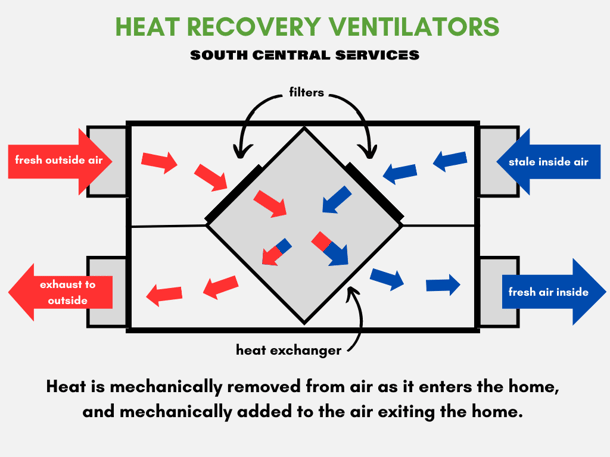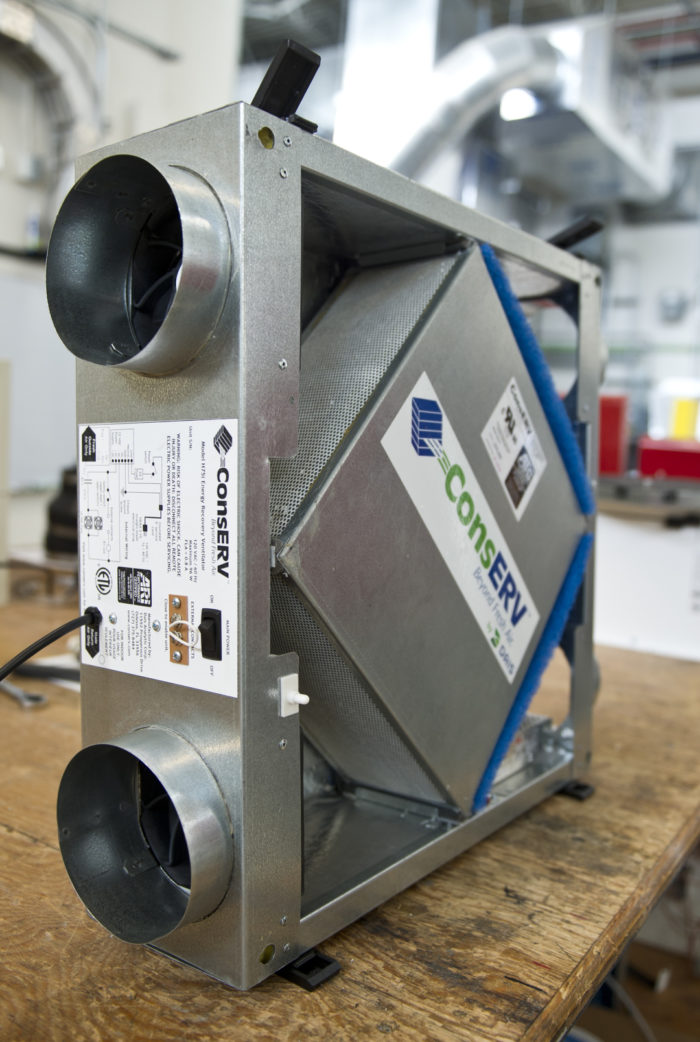Checking out the Perks of Heat Recovery Ventilation for Energy Effectiveness in Residences
Heat Recovery Ventilation (HRV) systems use house owners a sensible method to improving energy performance. By recovering heat from outbound air, these systems can significantly minimize heating and cooling expenses. Furthermore, they supply a consistent supply of fresh air, boosting indoor air top quality and convenience degrees. As homeowners consider sustainable alternatives, comprehending the subtleties of HRV systems comes to be significantly essential. What elements should one review before making such an investment?
Comprehending Heat Recovery Ventilation Systems

How HRV Boosts Indoor Air Quality

Power Financial Savings: The Monetary Advantages of HRV
Optimizing power effectiveness, heat recovery ventilation (HRV) systems use considerable financial benefits for homeowners. By recovering and recycling heat from exhaust air, HRVs significantly lower heating & cooling prices. This modern technology can bring about power financial savings review of as much as 30%, depending on climate and usage patterns. Home owners often observe decreased utility costs quickly after installation, making HRVs a financially wise investment gradually. In addition, several regions supply motivations or discounts for energy-efficient upgrades, additionally improving the monetary appeal. As power costs proceed to climb, the cost-effectiveness of HRVs becomes significantly clear. On the whole, the unification of HRV systems not only promotes energy performance however additionally adds to lasting economic savings for houses.
The Environmental Impact of Heat Recovery Ventilation
A significant ecological benefit of heat recovery ventilation (HRV) systems hinges on their capacity to reduce overall energy usage. By recovering heat from exhaust air and transferring it to inbound fresh air, HRV systems reduce the need for energy-intensive home heating and cooling down methods. This reduction in power need adds to lower greenhouse gas exhausts, as much less nonrenewable fuel source is needed to maintain comfy indoor temperature levels. Additionally, HRV systems boost indoor air top quality by efficiently trading stagnant air with fresh outdoor air, reducing dependence on mechanical air conditioning systems that can harm the setting. Overall, the implementation of HRV systems sustains lasting living methods and lines up with global initiatives to Learn More Here combat climate change by advertising power performance in domestic settings.
Picking the Right HRV System for Your Home
Just how can home owners ensure they select the right heat recovery ventilation (HRV) system for their needs? Initially, they ought to evaluate their home's size and format, as these variables affect airflow demands. Next off, reviewing the system's performance ratings is vital, as higher scores indicate much better efficiency and energy financial savings. Homeowners must additionally take into consideration installment and upkeep expenses, contrasting various brand names and versions for value. Furthermore, it is necessary to assess sound degrees, as some systems operate more silently than others. Consulting with HVAC specialists can offer tailored referrals based on specific home conditions. Lastly, examining individual evaluations and warranties can aid in making a notified decision, guaranteeing that the selected HRV system properly improves indoor air quality and energy performance.
Often Asked Inquiries

How Frequently Should I Clean or Maintain My HRV System?
The regularity of cleansing or preserving a heat recuperation air flow (HRV) system usually depends on use and environmental variables. Typically, it is suggested to perform maintenance every six months to assure peak efficiency and air quality.

Can HRV Solutions Help In Reducing Humidity Levels Inside?
HRV systems can effectively reduce interior humidity levels by exchanging stagnant, moist air with fresh, drier air from outside. HRV Heat Recovery Ventilation. This process assists keep a balanced indoor environment, enhancing comfort and avoiding moisture-related problems
What Is the Lifespan of a Typical HRV System?
The lifespan of a common heat recovery ventilation (HRV) system differs, usually lasting in between 10 to 15 years. Regular maintenance can extend its performance and functional life, making certain peak performance throughout its use duration.
Are There Any Kind Of Sound Worries With HRV Solutions?
Sound worry about HRV systems can develop, especially from fan operation. Nevertheless, several modern units are designed to decrease audio levels, ensuring they operate quietly while preserving performance, which addresses prospective disturbances in living atmospheres.
Can I Install an HRV System Myself, or Do I Need an Expert?
The specific contemplated whether to mount the heat recovery ventilation (HRV) system directly article or employ an expert. Normally, while DIY setup is possible, know-how assurances proper capability and conformity with regional building ordinance, enhancing system efficiency.